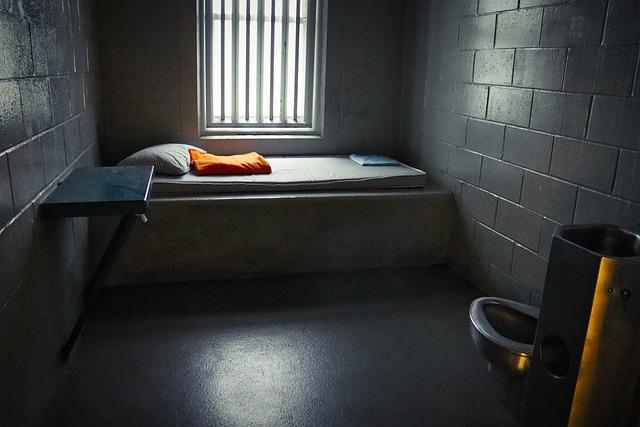When Sarah adopted Max, a spirited rescue dog, she was thrilled. But during a playdate, Max suddenly growled at another dog, leaving her shaken. Was this a warning sign? Understanding dog aggression is crucial. While occasional growling can be normal, consistent signs of aggression—like snapping or lunging—should raise alarms. Early intervention is key. Consult a professional trainer or behaviorist to ensure Max’s playful spirit doesn’t turn into a serious concern. Don’t wait; your dog’s well-being and safety depend on it.
Contents
- Understanding the Signs of Dog Aggression and Their Implications
- Identifying Triggers: Common Situations That Lead to Aggressive Behavior
- Effective Strategies for Managing and Mitigating Aggression in Dogs
- When to Seek Professional Help: Recognizing the Limits of Self-Intervention
- Q&A
Understanding the Signs of Dog Aggression and Their Implications
Recognizing the early signs of aggression in dogs is crucial for ensuring the safety of both your pet and those around them. Aggression can manifest in various forms, and understanding these signs can help you take proactive measures. Look for behaviors such as:
- Growling or Snarling: These vocalizations are often a warning sign that your dog is feeling threatened or uncomfortable.
- Baring Teeth: This is a clear indication of a defensive posture, signaling that your dog may be preparing to bite.
- Stiff Body Language: A rigid stance, raised hackles, or a tucked tail can indicate that your dog is on high alert.
- Direct Staring: Intense eye contact can be a challenge or a threat, especially if accompanied by other aggressive signals.
Understanding the implications of these signs is essential for responsible dog ownership. Ignoring early warning signals can lead to more severe behavioral issues, potentially resulting in dangerous encounters. If your dog exhibits any of these behaviors, it’s vital to assess the situation and consider the context. Factors such as the presence of unfamiliar people, other animals, or stressful environments can exacerbate aggressive tendencies.
Moreover, aggression can stem from various underlying issues, including fear, territorial instincts, or even pain. Identifying the root cause is essential for effective intervention. For instance, a dog that growls when approached while eating may be exhibiting resource guarding behavior, which can be addressed through training and behavior modification techniques. Consulting with a professional dog trainer or behaviorist can provide valuable insights and strategies tailored to your dog’s specific needs.
Ultimately, being vigilant and informed about your dog’s behavior is key to preventing aggression from escalating. Regular socialization, positive reinforcement training, and understanding your dog’s triggers can significantly reduce the likelihood of aggressive incidents. By taking these proactive steps, you not only enhance your dog’s well-being but also contribute to a safer environment for everyone involved.
Identifying Triggers: Common Situations That Lead to Aggressive Behavior
Understanding the situations that can trigger aggressive behavior in dogs is crucial for any pet owner. Certain environments and interactions can provoke a defensive response, leading to aggression. **Common triggers include**:
- Fear or Anxiety: Dogs may react aggressively when they feel threatened or scared. This can occur in unfamiliar environments, during loud noises, or when encountering strange people or animals.
- Protective Instincts: Many dogs have a natural instinct to protect their territory or their family. This can manifest as aggression towards strangers approaching their home or when they perceive a threat to their loved ones.
- Frustration: Dogs can become aggressive when they are unable to reach something they desire, such as a toy or food. This frustration can escalate quickly, especially if the dog feels cornered or trapped.
- Socialization Issues: Lack of proper socialization during a dog’s formative months can lead to aggressive behavior. Dogs that are not exposed to various people, animals, and environments may react aggressively out of uncertainty or discomfort.
Recognizing these triggers is essential for preventing aggressive incidents. For instance, if your dog shows signs of fear or anxiety in crowded places, it may be wise to avoid such situations or gradually acclimate them to these environments. **Monitoring your dog’s body language** can provide valuable insights into their emotional state, helping you to intervene before aggression escalates.
Additionally, understanding the context in which aggression occurs can help you develop effective management strategies. For example, if your dog becomes aggressive during play with other dogs, it may indicate overstimulation or a lack of appropriate boundaries. **Implementing structured play sessions** and closely supervising interactions can mitigate these aggressive tendencies.
Lastly, it’s important to remember that aggression is often a symptom of underlying issues. Whether it’s fear, frustration, or a lack of socialization, addressing the root cause is vital. **Consulting with a professional dog trainer or behaviorist** can provide tailored strategies to help your dog navigate their triggers safely and effectively, ensuring a harmonious relationship between you and your furry companion.
Effective Strategies for Managing and Mitigating Aggression in Dogs
Managing and mitigating aggression in dogs requires a multifaceted approach that prioritizes understanding the root causes of aggressive behavior. **Identifying triggers** is crucial; these can range from fear and anxiety to territorial instincts or even pain. Observing your dog’s body language and reactions in various situations can provide valuable insights. Keeping a journal of incidents can help pinpoint patterns and specific triggers, allowing for more effective interventions.
Once triggers are identified, **positive reinforcement training** can be a powerful tool in reshaping your dog’s behavior. Rewarding calm and non-aggressive responses with treats, praise, or play can reinforce desirable behavior. This method not only helps in reducing aggression but also strengthens the bond between you and your dog. Consistency is key; ensure that all family members are on the same page regarding training techniques to avoid confusion for your pet.
In some cases, **professional help** may be necessary. Consulting with a certified dog trainer or a veterinary behaviorist can provide tailored strategies that address your dog’s specific needs. These professionals can offer insights into behavioral modification techniques and may recommend a structured training program. Additionally, they can assess whether underlying medical issues may be contributing to aggressive behavior, ensuring a comprehensive approach to the problem.
creating a **safe environment** for your dog is essential in managing aggression. This includes providing a secure space where your dog can retreat when feeling overwhelmed, as well as managing interactions with other pets and people. Utilizing tools such as muzzles or leashes during training sessions can help prevent incidents while you work on behavior modification. Remember, patience and persistence are vital; addressing aggression is a journey that requires time and commitment.
When to Seek Professional Help: Recognizing the Limits of Self-Intervention
Understanding when to seek professional help for your dog’s aggression is crucial for both your safety and your pet’s well-being. While many dog owners may feel equipped to handle minor behavioral issues through training and self-intervention, there are specific signs that indicate a more serious problem. If your dog exhibits aggressive behavior that escalates or becomes frequent, it’s essential to recognize that you may have reached the limits of what you can manage on your own.
Some key indicators that professional intervention is necessary include:
- Increased Frequency: If your dog is showing aggression more often, it may signal an underlying issue that requires expert assessment.
- Severity of Aggression: Biting, lunging, or growling at people or other animals is a serious concern that should not be ignored.
- Triggers are Unclear: If you cannot identify what provokes your dog’s aggressive behavior, a professional can help uncover the root causes.
- Failure of Self-Intervention: If your attempts at training or behavior modification have not yielded positive results, it’s time to consult a specialist.
Moreover, consider the context in which the aggression occurs. If your dog displays aggression in situations that previously did not provoke such a response, it could indicate a shift in their mental state or health. Changes in behavior can stem from various factors, including anxiety, fear, or even pain. A professional can conduct a thorough evaluation to determine if there are medical or psychological issues at play.
it’s important to prioritize safety. If your dog poses a risk to other pets, family members, or strangers, seeking help from a qualified trainer or behaviorist is not just advisable; it’s essential. Professionals can provide tailored strategies to manage aggression effectively, ensuring a safer environment for everyone involved. Remember, addressing aggression early on can lead to better outcomes and a more harmonious life with your furry companion.
Q&A
-
What are the signs of dog aggression?
Common signs of dog aggression include:
- Growling or snarling
- Baring teeth
- Stiff body posture
- Direct eye contact
- Snapping or lunging
If you notice these behaviors, it’s essential to take them seriously.
-
When should I seek professional help?
If your dog displays aggressive behavior consistently or towards specific triggers (like other dogs, people, or certain situations), it’s time to consult a professional dog trainer or behaviorist. Early intervention can prevent escalation and ensure safety for both your dog and others.
-
Can aggression be managed or trained away?
Yes, with the right approach, many aggressive behaviors can be managed or modified. Positive reinforcement training, socialization, and behavior modification techniques can help your dog learn appropriate responses. However, this process requires time, patience, and consistency.
-
What should I do if my dog shows aggression?
First, ensure safety by removing your dog from the situation. Avoid punishment, as it can worsen aggression. Instead, focus on understanding the triggers and seek guidance from a qualified professional. Addressing the issue promptly can lead to better outcomes for your dog’s behavior.
recognizing the signs of dog aggression is crucial for the safety of your pet and those around them. If you notice concerning behaviors, don’t hesitate to consult a professional. Early intervention can lead to a happier, safer environment for everyone.




